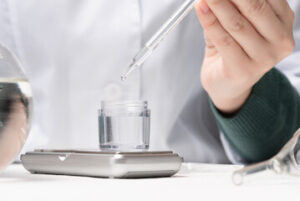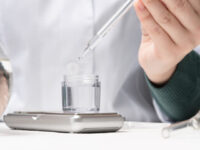What to Look For in a Water Quality Test
Water Quality Testing Colorado provides a snapshot of the contaminants in your drinking water. These include pH, total coliform bacteria, minerals like iron and hardness, and other elements that could be dangerous to your health.
Some germs and chemicals can be tested with a home kit, such as test strips or color disk tests. However, other contaminants require a lab for testing.

Water’s pH value is a measure of how acidic or basic it is. The scale goes from 0 to 14, with 7 being neutral. Anything below 7 is considered acidic, and anything above is basic.
Ideally, drinking water’s pH level should fall between 6.5 and 8.5. Anything outside of this range may corrode pipes and cause metals to leach into the water. This poses a health risk because high levels of copper, iron, and zinc are associated with cancer, heart disease, memory problems, and high blood pressure.
Freshwater’s pH varies naturally depending on the environment. However, water’s pH can also be affected by human activity. These changes can occur from a variety of reasons including algal blooms, industrial processes that result in the release of bases or acids, or the oxidation of sulfide-containing sediments.
The EPA recommends that drinking water be within the safe range of 6.5 to 8.5, and anything outside of this is unsafe. Water with a lower reading is more acidic and susceptible to metal leaching, which can lead to corrosion and health risks. This type of water can also irritate the skin and eyes and cause a metallic or sour taste in the drinker’s mouth. In addition, it can stain laundry and leave a blue green color on sinks and drains.
The pH level of drinking water is an important factor in many industries. For example, specific pH values are needed to produce certain types of dyes and chemicals used in textiles and pulp and paper manufacturing. Moreover, the pH of water is used to control the growth of bacteria and other microorganisms in food processing operations. These organisms can be harmful to the health of consumers and require special cleaning procedures to ensure they are removed from the production line.
Coliform bacteria are naturally found in the intestinal tracts of warm blooded animals, including humans. They do not cause disease, but their presence indicates the possible existence of more dangerous organisms, such as Escherichia coli (E. coli). Since specific disease-producing organisms are difficult to test for, scientists have selected the group of closely related bacteria known as “Coliforms” as a general indicator of whether water is suitable for drinking.
To assess the water quality of public and private wells, most laboratories test for coliforms. The most common way of determining a coliform count is to pass 100 ml of water through a membrane filter. This method separates out any bacteria in the sample and allows them to be counted on a petri dish. Bacterial colonies on the plate can be identified by a trained laboratory technician and their number recorded.
When the coliform count of your water is high, it indicates that harmful germs are present in the sample. These microbes may be from human or animal feces, and could be responsible for illness in humans, livestock, pets, and wildlife. If the coliform level is high enough, you should disinfect your water as soon as possible.
The EPA sets legal limits for total and fecal coliforms in drinking water, with the goal of having no coliforms present at all. These health goals do not apply to privately owned wells, but the EPA does recommend that private well owners follow best practices to reduce the risk of contamination.
The minerals value of water determines how good it tastes, how well it cleans and how much it can benefit the health of people who drink it. The mineral test checks the presence of dissolved minerals such as calcium and magnesium in the sample. Having these minerals in the water is important for the human body and helps to prevent diseases like osteoporosis.
Water testing also checks for the levels of dissolved metals such as lead, iron and copper. Metals can be harmful to humans if their concentration in the water is too high.
Another important factor of the mineral test is the pH level, which measures whether the water is acidic or basic on a scale of zero to 14. A low pH can cause corrosion of plumbing components like pipes and may leave a metallic taste. A high pH can also cause a slippery feel, deposits, and a soda taste in the water.
In order to get the most accurate results, the samples should be collected using laboratory-approved kits. These include test strips for iron and manganese, color disk tests for lead and coliforms, and digital portable instruments for total dissolved solids (TDS) and hardness.
TDS testing includes all dissolved substances in the water such as salt, calcium, magnesium and potassium. It also detects the levels of some unwanted minerals, such as arsenic and fluoride.
Once the laboratory receives your water sample, they will provide you with a report which lists all the contaminants detected and their concentration levels in the water. The contaminant levels are shown in milligrams per liter (mg/L), which is equal to one part of the contaminant in one million parts of the water.
Access to safe drinking water is something most people take for granted, but it’s a privilege that’s not available in every part of the world. In fact, many people depend on public water supplies that must adhere to strict EPA guidelines to protect their health and safety. Water testing is crucial to ensure this safety.
Most of the contaminating bacteria that affect drinking water come from human feces, and testing for them is important to identify contamination problems. The simplest and most common method of testing for these contaminating microorganisms is the total coliform test. This is a measure of all rod-shaped bacteria found in a sample of water, and most of them do not cause illness to humans. However, if the presence of these bacteria indicates that other disease-causing organisms have also infiltrated the water supply, the coliform test can be used to find out more about the nature of the problem.
Other tests may be necessary to determine a water’s chemical makeup and physical characteristics, such as its conductivity, odor, or sediment content. These tests are usually best performed in a laboratory because they require taking a sample of the water in a sterilized container and following specific collection instructions. Using the wrong container can introduce unwanted contaminants into a test result.
Once a lab has completed its water testing, the results will be presented in a report that lists the contaminants tested and their concentrations. The concentrations are measured in parts per million (ppm) and are expressed as the amount of a contaminant in one million parts of water. A positive concentration means that the water is unsafe to drink, and a negative value signifies that the water is safe for consumption.
The acidity level of water is a very important aspect to consider when performing a water quality test. It has been found that water with high acidity is not only unhealthy to drink but can also pose a health risk to the people drinking it. This can be the result of a lack of proper filtration and the presence of chemicals like pesticides that haven’t been removed from the water supply.
Acidic waters are usually corrosive and can cause damage to pipes and plumbing systems. It can also leach metal ions from the aquifer and pipes into the drinking water. These metal ions can have harmful effects on the human body.
Optimal pH levels are essential to healthy ecosystems and the survival of fish, plants, and humans. Water samples should be tested regularly with a pH meter to ensure that the water remains within its ideal range.
Many factors affect the pH value of a water sample. For instance, when acid water comes into contact with certain chemicals and metals, it becomes even more poisonous than usual. For example, fish that can normally withstand pH values of 4.8 will die at a value of 5.5. This is because acidic water interferes with the absorption of iron in the fish’s gills.
The best way to test the acidity level of a water sample is with a pH meter, which can be purchased at most home improvement stores. The meter works by using two specialized electrodes to measure the potential difference of hydrogen ions in the water and converts it into a reading on a display screen. The meter is calibrated before testing to ensure that it provides accurate readings.





